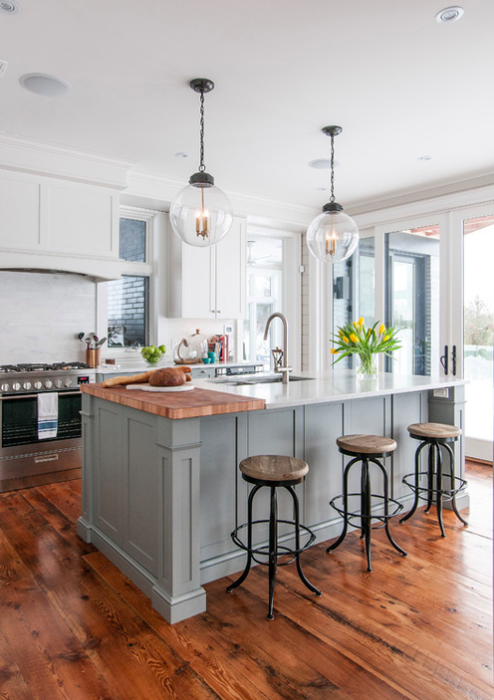How to Install a Kitchen Island Leg for Maximum Stability and Style
How to Install a Kitchen Island Leg for Maximum Stability and Style
Blog Article
The Value of a Sturdy Kitchen Island Leg in Producing a Practical Food Preparation Location
A tough kitchen area island leg offers as a fundamental part in developing a practical cooking setting, giving needed support for both the countertop and various cooking area tasks. As kitchen areas develop into multifunctional locations for food preparation, dining, and mingling, the option of materials and design factors to consider for island legs ends up being increasingly vital.
Advantages of Sturdy Island Legs
Providing crucial assistance, sturdy kitchen island legs play a pivotal function in enhancing the performance and resilience of kitchen area islands - kitchen island leg. These legs not just bear the weight of the kitchen counter and any added products put on the island, yet also contribute to the overall stability of the structure. A well-supported kitchen area island guarantees that it continues to be upright and useful, even under heavy usage, which is especially vital in hectic kitchen area settings
Furthermore, tough island legs can enhance the visual appeal of the kitchen. They supply a solid framework that can enhance various style styles, from contemporary to typical. This adaptability permits property owners to personalize their cooking area islands according to personal taste while making sure that the architectural integrity stays uncompromised.
In enhancement to their encouraging function, robust kitchen area island legs can also enhance safety. Ultimately, investing in sturdy cooking area island legs is essential for a functional and visually pleasing cooking area.
Products for Kitchen Area Island Legs
When picking products for kitchen area island legs, sturdiness and aesthetic allure are important aspects to consider,. The most common products consist of hardwood, steel, and crafted timber, each offering unique advantages.
Hardwood, such as maple, cherry, or oak, is a traditional selection because of its toughness and ageless beauty (kitchen island leg). It can hold up against considerable weight and is immune to use, making it perfect for high-use kitchen settings. Additionally, wood can be stained or repainted to complement various kitchen designs
Steel legs, frequently crafted from stainless-steel or wrought iron, offer a commercial and modern appearance. They are extremely solid and can support significant tons while being resistant to dampness and warm, which is useful in a cooking area. Metal legs can also be quickly cleaned up, boosting their practicality.

Design Factors To Consider for Stability
The selection of products for kitchen area island legs straight influences the layout considerations for security. When developing a kitchen island, it is extremely important to examine the weight-bearing capacity of the selected products. Heavier materials, such as strong wood or steel, usually give higher security, specifically under the tension of day-to-day use.
Furthermore, the leg design should include proper geometry to improve security. A larger base increases the support location, minimizing the threat of tipping or wobbling. Factor to consider should likewise be provided to the elevation of the legs; disproportionate leg sizes can lead to discrepancy, jeopardizing the total stability of the island.
Furthermore, the circulation of weight throughout the island is essential. Making sure that the leg Visit Website positioning aligns with the heaviest components, such as devices and counter tops, will certainly further enhance stability.
Upkeep Tips for Longevity

Cleaning up is an additional crucial element of maintenance. Depending on the material of the legs-- whether timber, steel, or composite-- appropriate cleaning techniques need to be used. For wood legs, a gentle wipe with a suitable timber and a wet towel cleaner will help protect their surface. Steel legs may call for a light gloss to prevent rust and maintain their radiance.
Additionally, tightening screws and bolts regularly can make sure security and stop tottering. Take into consideration reinforcing the legs with added braces or sustains to improve sturdiness if the kitchen area island experiences heavy usage. Applying a protective coating or sealer can protect versus moisture and spots, extending the lifespan of the legs. By following these upkeep ideas, house owners can ensure their kitchen island legs stay durable and functional for many years ahead.
Selecting the Right Leg Design
Normal maintenance guarantees that look what i found kitchen area island legs stay strong and practical, however choosing the best leg style is similarly essential for both appearances and assistance. The choice of leg style can considerably influence the overall layout and consistency of your cooking area.

Functionality is another vital facet. For circumstances, thicker legs or those with a sturdy base can support heavier countertops and equipment, enhancing the island's energy. Conversely, slender legs may create an airy appearance, suitable for lighter layouts yet possibly much less helpful.
Verdict
In recap, the value of strong kitchen area island legs can not be overemphasized in the production of a useful food preparation location. These legs supply necessary assistance, here enhance stability, and contribute to the total visual of the kitchen area. By very carefully choosing suitable materials and designs, along with applying correct maintenance practices, the longevity and performance of kitchen area islands can be guaranteed. Eventually, buying durable island legs is essential to achieving a secure and effective cooking atmosphere.
A strong kitchen island leg offers as a fundamental part in establishing a useful food preparation setting, supplying necessary assistance for both the countertop and numerous kitchen tasks.Providing important assistance, durable cooking area island legs play a critical duty in enhancing the capability and resilience of cooking area islands. Inevitably, investing in strong kitchen island legs is vital for a useful and visually pleasing cooking area.
Factor to consider needs to likewise be given to the height of the legs; out of proportion leg lengths can lead to discrepancy, endangering the total security of the island.
Wooden legs offer heat and a timeless look, while metal legs use a industrial and modern-day feel.
Report this page